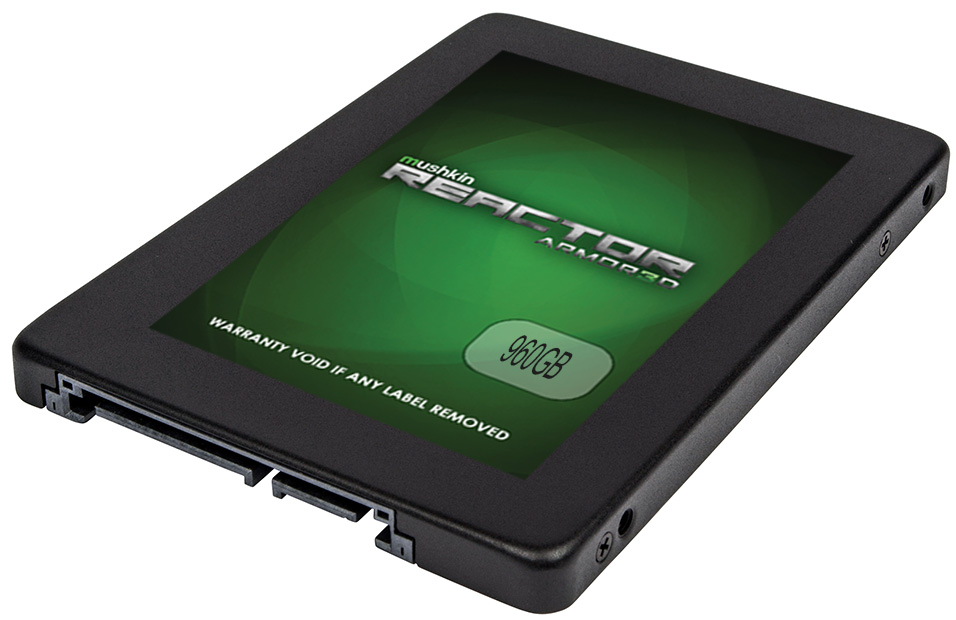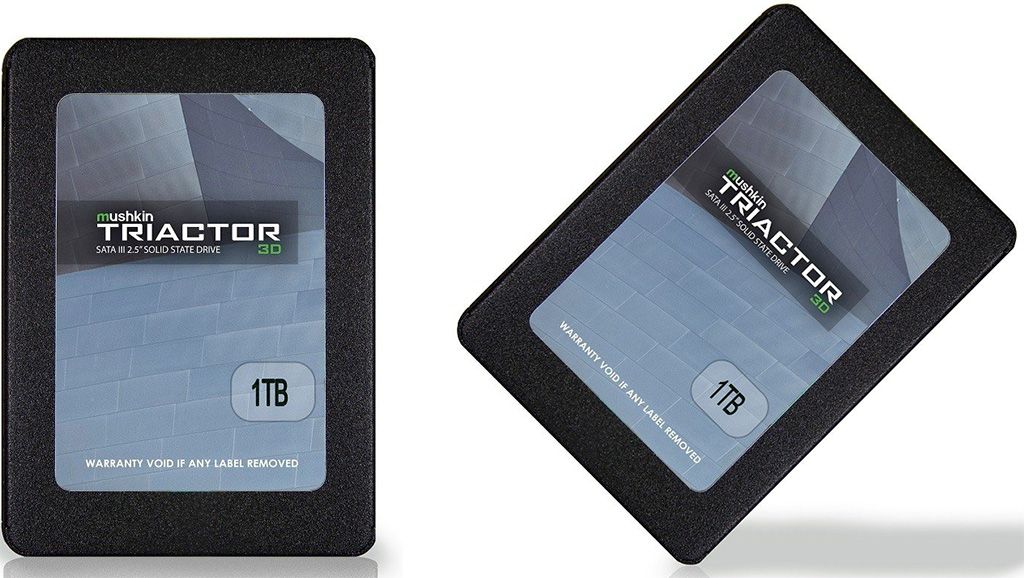Mushkin Reactor3D and Triactor3D boast improved SATA SSD performance
Joining the 3D NAND party, with MLC and TLC costumes.

It took a bit longer than some of the other SSD players, but Mushkin has finally managed to secure a stockpile of 3D NAND flash memory chips, which it promptly outfitted to a couple of new SSD lines. Both are 2.5-inch SSDs with a SATA 6Gbps interface, but with that aging spec comes comparatively favorable pricing.
At the top of Mushkin's SATA 6Gbps stack is its new Reactor Armor3D line. These SSDs pair 3D multi-level cell (MLC) NAND flash memory chips with a Silicon Motion SM2258 controller. Mushkin is offering this line in three different capacities—240GB, 480GB, and 960GB.
The 240GB version offers up sequential read performance of up to 565MB/s but sequential write performance of just 300MB/s, the latter of which is nothing to boast about. The drive's 4k random read and write performance check in at up to 63,000 IOPS and 70,000 IOPS, respectively.
Sequential read performance is the same for both the 480GB and 960GB models, which is effectively the limit of the SATA connection. Both feature faster write speeds at up to 500MB/s for the 480GB model and 510MB/s for the 960GB drive. Both also offer faster 4K random reads and writes—80,000 IOPS for the 480GB on both read and write, or 77,000 IOPS read and 80,000 IOPS write on the 960GB drive.
According to TechPowerUp, pricing is expected to be $90 for the 240GB drive, $160 for 480GB, and $270 for 960GB. That's not bad, considering the rated performance, but the NAND supply is still creating higher prices than last summer.

The other new entry to Mushkin's lineup is the Triactor 3D series. Where the Reactor Armor3D are labeled as performance drives, Mushkin says its Triactor 3D drives take aim at the mainstream market. There are two Triactor 3D capacities—512GB and 1TB. Both of these pair 3D triple-level cell (TLC) NAND flash memory with the same Silicon Motion SM2258 controller. What's interesting here is how the performance compares with the Reactor Armor3D drives.
The 512GB model is rated to deliver sequential read performance of up to 565MB/s and sequential write performance of up to 525MB/s, along with 4K random read and write performance of up to 86,000 IOPS and 80,000 IOPs, respectively. That makes it slightly faster, in theory, than the 480GB Reactor Armor3D. The 1TB model also compares favorably with the 960GB Reactor Armor3D, with 525MB/s sequential reads, 525MB/s sequential writes, 85,000 IOPS 4K random reads, and 82,000 4K random writes.
The biggest gaming news, reviews and hardware deals
Keep up to date with the most important stories and the best deals, as picked by the PC Gamer team.
The key to the performance vs. mainstream aspect isn't maximum throughput, which is what the specifications list, but sustained throughput. The write speeds in particularly are likely to fall off with TLC NAND under constant pressure, after the cache is full. For heavy storage workloads, it can be a factor, but for moderate desktop use the lower prices on TLC drives usually win out.
It is not yet known what pricing will be for the Triactor 3D series, but since these drives use TLC, it is reasonable to expect they'll retail for slightly less than the Reactor Armor3D models.
Paul has been playing PC games and raking his knuckles on computer hardware since the Commodore 64. He does not have any tattoos, but thinks it would be cool to get one that reads LOAD"*",8,1. In his off time, he rides motorcycles and wrestles alligators (only one of those is true).


